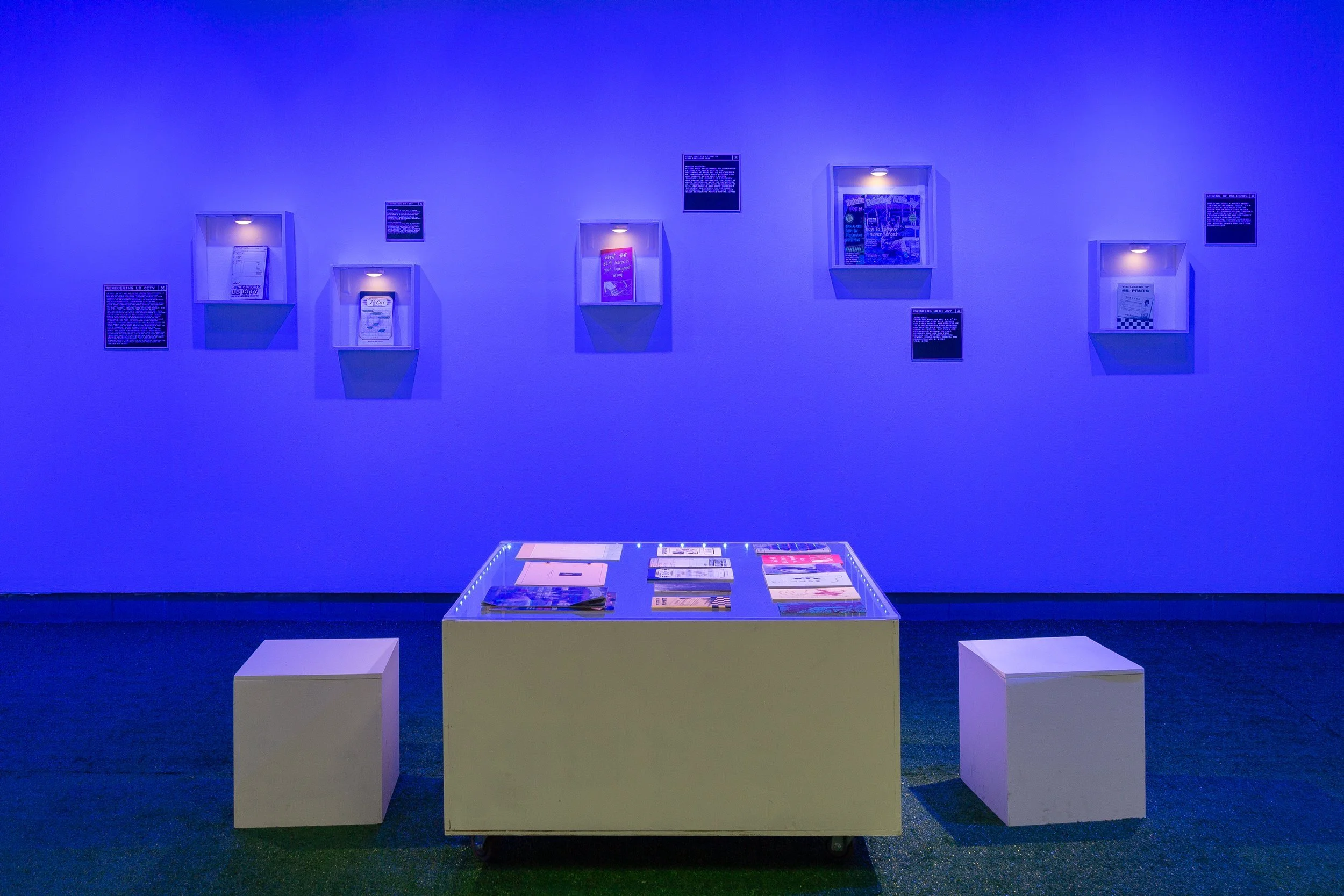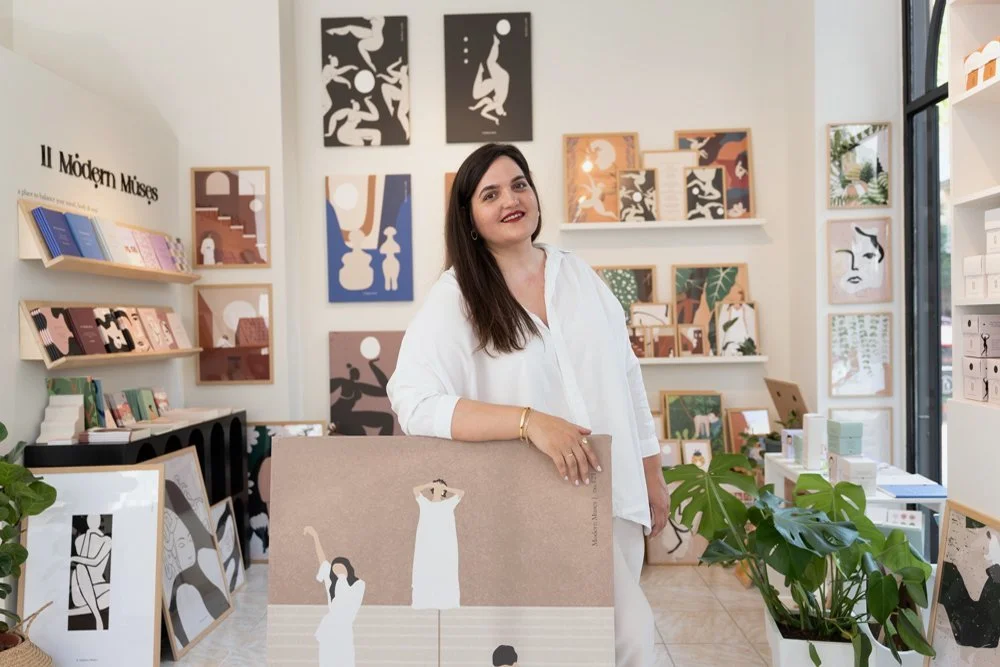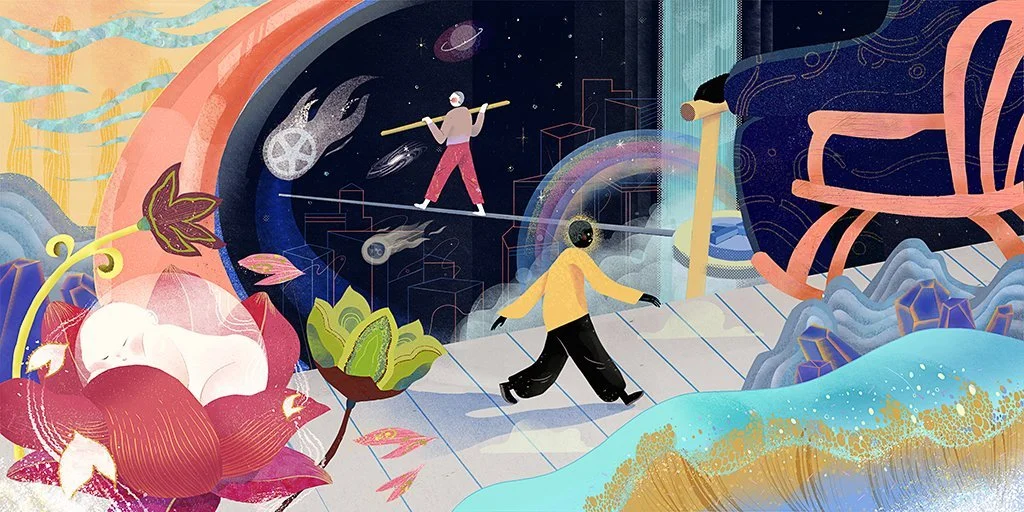10 Questions with Imelda Wei Ding Lo - Fortunus Games
Imelda Wei Ding Lo (a.k.a. Fortunus Games) is a multi-disciplinary writer, artist, podcaster, and game developer passionate about environmentalism, technology, alternative health, and above all, story-telling mediums that explore character psychology and development.
Imelda's short story, "Mephistopheles Tips His Hat," was published in the Victoria Literary Festival's 2019 short story anthology.
She also has self-published two graphic novels, "Sam in New York" and "The Book of Joel," which are currently being updated weekly on Tapas.io.
Some of her artworks, including "The Modern Tantalus" and "Farewell My Father's Son," were exhibited at THE HOLY ART and Boomer Art Gallery in London, England, in 2021.
Imelda is also the co-host of the literary podcast, "The Nuts and Bolts of Writing," which is on YouTube, Apple Podcasts, Spotify, and other platforms, which are all linked in the podcast’s Anchor.fm profile.
Check out her RedBubble store here.
Artist’s portrait - Imelda Wei Ding Lo
The Book of Joel | DESCRIPTION
One of Imelda Wei Ding Lo's current projects is "The Book of Joel", a psychological graphic novel exploring the nature of desire, intimacy, and the continual desire for self-improvement.
Part of the "Sam in New York" project — which focuses on the lives and experiences of various families living in New York City's Lower East Side in the early 20th century — "The Book of Joel" is a literary graphic novel that combines striking visuals with flow-of-consciousness prose and dialogue. It gives us an intimate look into the psychological landscape of its protagonist, Joel Farber, a cynical and intellectual young man struggling to find meaning in life and love.
Joel's relationship with his lover, Malka, plays a large role in his character development. Through their relationship, Lo explores the relationship between sexual and emotional intimacy, love and courage, and the importance of trust and communication.
"The Book of Joel" can be summarized as follows:
"Those who know him well (such as Sam Abramov) say he's like a cactus — soft on the inside and prickly on the outside. This is the story of Joel Farber — debate enthusiast, stamp collector, and seeker of truth.
Join Joel as he grows up on the Lower East Side of New York City, falls in love with the perceptive, kind-hearted Malka, and copes with his shockingly low self-esteem, dysfunctional family, and the remnants of a childhood stutter."
Limited edition art collectors’ book
INTERVIEW
First of all, introduce yourself to our readers. You are a multi-disciplinary writer, artist, podcaster, and game developer. What are your history and your artistic background?
My name is Imelda Wei Ding Lo. I have been interested in art since I was a small child, particularly in illustration and storytelling. For as long as I could remember, my favorite stories have always been heavily character-centric, focusing on the complexities, incongruencies, and intricacies of the human condition.
I use art and literature to understand myself and others more. I am also deeply interested in history, politics, and ethics. My education reflects this: I graduated with a B.A. Hons with High Distinction in history and political science, and right after graduation, I went to law school.
I've always liked to talk a lot too — and this is probably why and how I got the idea for making my podcast, "The Nuts and Bolts of Writing."
The Book of Joel - Cover and Prologue. Fortunus Games©
The Book of Joel - Cover and Chapter 1, Digital Media (Ibis Paint, Medibang, Canva) and Pencil, 23.1 x 14.4 inches, 2021. Fortunus Games©
You are also the founder of Fortunus Games, an indie game company. How did you start creating games? And how much does it influence your artistic practice?
I started creating games in December 2018 when I had some time off during Christmas break. I wanted to do something with my ideas for the "Sam in New York" story, but I wasn't sure where to start and what to make canon. So, I started programming a visual novel that lets players make their own choices. The original concept behind the "Sam in New York" visual novel allowed the player to make choices on behalf of Sam, who was less bombastic and more of an everyman than he is now in the "Sam in New York" graphic novel that updates weekly on Tapas and Webtoon.
Since starting the "Sam in New York" graphic novel last August, I've stopped working on my visual novel or any other games, for that matter.
Right now, I want to focus on the characters that populate the "Sam in New York" universe — and on their psyches, complexes, cultural backgrounds, and loves.
Only after I have finished my main graphic novel projects ("Sam in New York" and "The Book of Joel" as of April 2021) will I return to the visual novel project. I feel like I need to learn more about my characters before making a visual novel. The scope and complexity of the "Sam in New York" characters have expanded exponentially since 2018.
In short, Fortunus Games is now primarily a producer of graphic novels, despite its name. However, we may return to making visual novels once we have finished our main graphic novel projects.
As a writer and graphic novelist, what are the themes you are most interested in?
As a writer and graphic novelist, I am most interested in the following themes:
Character psychology and development
The ever-changing concept of the self
What does it mean to be lonely? What does it mean to be not lonely?
Sexuality as a form of communication and self-discovery
Living in Diaspora and hybrid cultural identities
The influence of one's mother tongue on thought processes and identity
Let's talk about your project, "The Book of Joel." The book follows the story of its protagonist, Joel Farber, and it is set in the early 20th century in New York City. What can readers expect from "The Book of Joel"?
Readers will find "The Book of Joel" a fascinating deep dive into the protagonist Joel's psychological landscape. A surreal, flow-of-consciousness meditation on the nature of desire, intimacy, and the continual desire for self-improvement, “The Book of Joel” is part of my larger "Sam in New York" project, which focuses on the lives and experiences of various families living in New York City's Lower East Side in the early 20th century.
With "The Book of Joel," I aim to create a literary graphic novel experience by combining visuals with flow-of-consciousness prose and dialogue.
This contrasts starkly with my other ongoing graphic novel, "Sam in New York," which is narrated from Joel's friend Sam's perspective. Unlike the introverted and gloomy Joel, Sam is outgoing, optimistic, and bold. While Sam narrates events chronologically, Joel narrates events based on emotional intensity. Joel appears to be quiet and restrained, but in reality, he is much more emotional than Sam. Accordingly, his emotionalism influences his worldview and perception of himself and others around him.
"The Book of Joel" also explores some themes that are not as important in "Sam in New York," namely, sexuality and romance as forms of communication and growth. Joel's relationship with his lover, Malka, will play a large role in his development as a person throughout the graphic novel. Growing up in a dysfunctional family with cripplingly low self-esteem due to bullying and a childhood stutter, Joel finds his "voice" as he grows as a person in his relationship.
Malka will grow alongside him as well — she will learn important lessons. Specifically, she will learn how to stop taking on others' emotional burdens when there is no need to and how to relax and appreciate the smaller things in life, even when everything seems bleak.
Ultimately, "The Book of Joel" is a psychological graphic novel that aims to immerse the reader in Joel's psyche as he grows and heals from past wounds.
Readers can also expect to be immersed in the historical setting of "The Book of Joel," which is, as you've mentioned, the early 20th century in the Lower East Side of New York City.
Unlike "Sam in New York," however, "The Book of Joel" will feel much more "timeless" since it is more focused on internal changes and developments than external events. Nonetheless, readers can still expect to see historical footnotes and references to the historical setting of the work, such as words in different languages spoken during the time, such as Yiddish and Sicilian, historical outfits, and architecture.
A Good Night’s Sleep, Digital Media (Ibis Paint) and Pencil, 14.3 x 8.3 inch, 2021. Fortunus Games©
Where did you find inspiration for your work? What are your primary sources, both in literature and a graphic novel?
My main sources of inspiration are myself and my own experiences. Most of my characters are based on myself and those I've grown up around, as well as stories I've heard from people.
Sam, for instance, is much like myself. He is a bold artistic man who wants a lot in life and doesn't shy away from getting what he wants. Joel, despite being so different from Sam, is also based on myself. Joel's shyness, his argumentative facade that he adopts in high school in an attempt to get himself to talk to more people and break away from his shyness — these are taken from my own life since I used to be very shy. To get out of my crippling shyness, I pushed myself to be overly argumentative, to balance the silence that had characterized the first 13 years of my life.
After talking to a few friends about my developments, I realized that this kind of self-directed development has rarely been discussed or explored in literature. In literature, characters usually develop as reactions to events and the situation(s) they find themselves in, not because they necessarily want to change. However, I wanted to change — and I wanted to create a character who tried to change himself, too. Thus, I created Joel to explore this theme of self-directed development, self-discovery, and self-improvement.
I am also inspired by various authors and mangaka, such as Philip Roth, Inio Asano, and William Faulkner, who explore many of the same themes I like to explore, such as loneliness, sex, identity, immigration, ethnicity, and the impact of history on people.
Can you tell our readers what experiences of your life are reflected in your art? And vice versa, what does your art bring to your everyday life?
Art (both visual art and writing) means a lot to me. It is a way of connecting with others and also a way of expressing ideas that often can't be expressed in other aspects of life. Particularly during the pandemic, art has helped me become more disciplined and want to achieve more with my characters and stories. Before the pandemic, I only drew or wrote when I felt like it; hence, I never managed to get very far.
As I've joked with my podcast co-host and editor of The Unconventional Courier literary zine, Teresa (Instagram: @tete.depunk / Twitter: @punk_tete), the pandemic does have a silver lining. If it weren't for COVID, I would've never started "Sam in New York" or "The Book of Joel" or even established a regular posting schedule on Instagram.
Without my creative work, I would probably still be directionless. Before the pandemic, I was struggling with underemployment as a fresh graduate in an oversaturated field and dedicated most of my time to my job search. However, once the pandemic hit, I suddenly had more time to work on my personal projects.
The first graphic novel I started (and finished!) last year was "Finding Sam," a short story I drew and wrote for Webtoon's Short Story Contest. You can read it here.
Published from May to June 2020, "Finding Sam" explores an alternative timeline where Sam chooses to be a lawyer rather than the actor he's always wanted to be. It poses the following questions: How do we deal with the pressure of parental disappointment? Parental disapproval? What are our personal dreams worth? Does it matter if your dreams are "unrealistic"?
I could've never gotten to where I am today without the help of my two podcast co-hosts, Teresa (Instagram: @tete.depunk / Twitter: @punk_tete) and R.N. Roveleh (Instagram: @helevorn_bor / Twitter: @NRoveleh), who are amazing writers and artists. Our lively discussions about the human psyche, the nature of writing, and the intersection between fiction and reality have really motivated me to start and finish "Finding Sam" and continue working on "Sam in New York" and "The Book of Joel."
You are very active on social media, and you also host a podcast, "The Nuts and Bolts of Writing." What are your thoughts on social media as a means for art promotion?
I think social media is a great way to promote your art and get to know other artists. I'm not sure where I would be without social media! I think social media has also really helped to democratize the process of getting to know other artists and getting your work out there.
Before social media, it was much harder, and a lot of the time, getting into the art world was about who you knew, not what you knew, and of course, luck. Now, these factors are still important, but it's easier to get your foot in the art world even if you don't know anyone there.
The Stutterer, Digital Media (Ibis Paint) and Pencil, 10.7 x 17.1 inch, 2021. Fortunus Games©
Over the past year, we have witnessed many changes in the art world and our lives in general. What is one thing that you miss about your life pre-Covid, career, and art-wise?
I miss physically going to art galleries, meeting up with friends, traveling, and meeting new people face-to-face. When the pandemic first started, it was very hard for me to get used to being inside so much. Before the pandemic, I was never the sort to spend much time at home — I preferred being out and about.
And what is one new thing that, over the past year, you have discovered?
Ever since the pandemic started, I've thrown myself into social media. At first, it was to get artistic inspiration. Then, it was so I could start networking with other artists and creators, even though I couldn't physically meet anyone.
I've since discovered that social media is almost like a part-time (at times, full-time) job in some ways. It definitely has helped me become more disciplined, just as working on a couple of months' worth of graphic novel buffer is.
I've also discovered how rewarding it is to get up every day and work on something you love. I've always loved writing and illustrating introspective stories and characters, but I never thought I could get so much done. Before the pandemic, all I had were random ideas. The pandemic has helped strengthen my resolve to start, finish, and publish my stories online. It’s also helped me to regularly record new episodes for my podcast.
Finally, what are your plans for the future?
I plan to work on my buffers for "The Book of Joel" and "Sam in New York" every evening and finish at least 2-3 panels every night after finishing work.
I expect these two works to last at least 2-3 years in total if I continue doing weekly releases of 2-3 pages.
I also plan to participate in more interviews like this, create more podcast episodes, and join more writing and art open calls and contests. I want to share my work with more people and get to meet more like-minded people.
























